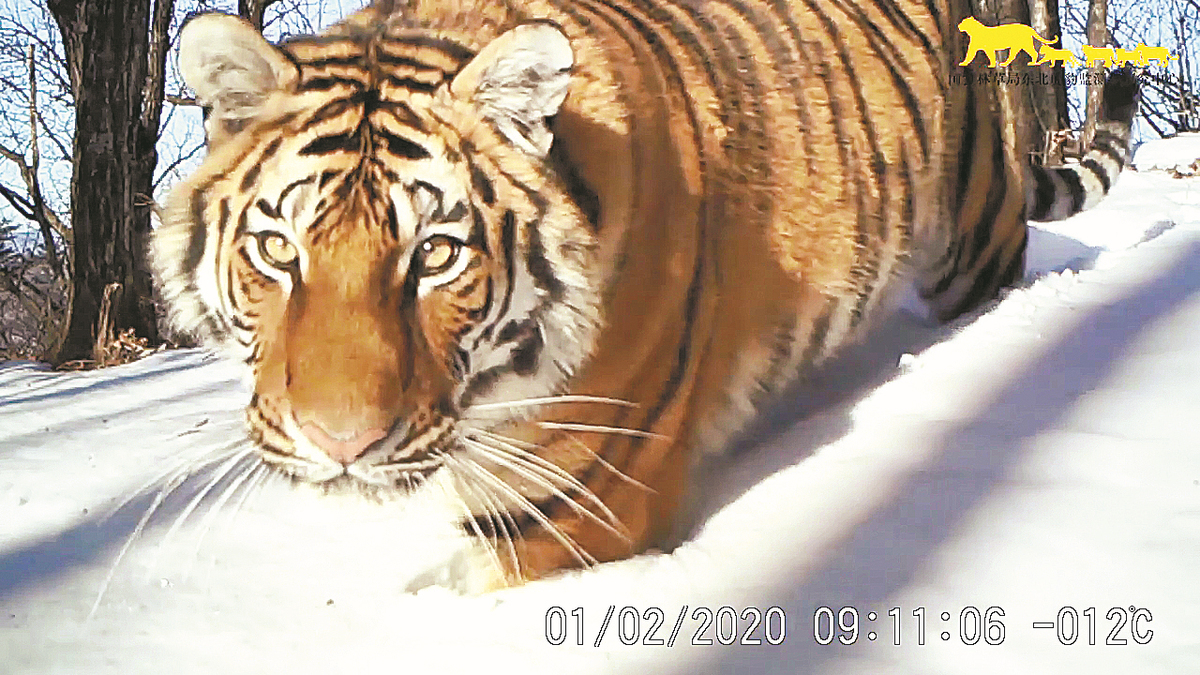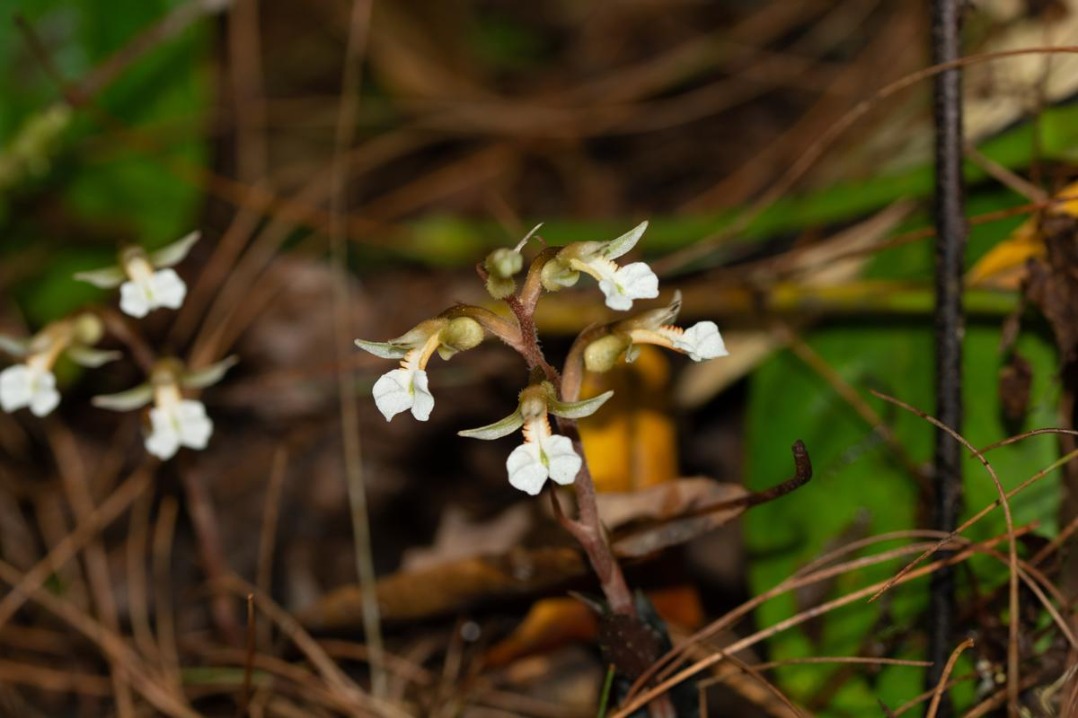Amur tiger coming in from the cold

Editor's note: As protection of the planet's flora, fauna and resources becomes increasingly important, China Daily is publishing a series of stories to illustrate the country's commitment to safeguarding the natural world.

The big cats are expanding their territory in China every year. Li Hongyang reports.
The number of Amur tigers, also known as Siberian tigers, relocating from Russia into northeastern China, is rising because of lower levels of human activity, improvements in their habitat and a smoother transit corridor between the countries, experts said.
Jiang Guangshun, a professor of wild animal resources at the Northeast Forestry University in Harbin, Heilongjiang province, said his research team calculates that the area the tigers inhabited across the Sino-Russian border expanded by about 12 kilometers every three years from 2003 to 2016.
"This expansion highlights the importance of the construction of the Sino-Russian cross-border environmental corridor for tigers," he said, referring to an access route built by forestry departments. Data from the research team show that between 2013 and 2016, nearly 80 percent of the tigers shuttled back and forth across the border.
"As natural habitats are being restored in China, more Amur tigers are giving birth and raising cubs in the country, meaning that they are gradually expanding into China," Jiang said.
In 2021, it was announced that the Northeast China Tiger and Leopard National Park would be established, along with four other parks across the country.
The park, covering approximately 14,100 square kilometers, straddles the provinces of Heilongjiang and Jilin. By the end of 2021, the number of wild Amur tigers living in the facility had risen to 50 from 27 in 2017. Jiang said that before the 1980s, at least 150 Amur tigers lived in the forests of Northeast China. However, economic development in the area saw their numbers fall to about 12.

In 1998, China began balancing economic development with forest protection, and started a number of conservation projects. As a result, the tiger population has grown. "The conservation of tigers is recognized as a global challenge, due to their expansive habitat requirements. A female needs 400 to 500 sq km, while a male requires over 1,000 sq km," Jiang said.
The national park is indispensable for Amur tiger conservation efforts, he said, adding that the facility provides a crucial sanctuary because it nestles alongside Russia's Land of the Leopard National Park.
"The collaboration between these neighboring parks creates a shared home for the animals. The construction of the Sino-Russian cross-border environmental corridor is vital because several barriers hinder the movement of tigers between the two sides. Border fences and roads built in the area are among those obstacles. Efforts are required by both sides to promote the corridor," he said.
Wang Zhigang, head of Dongning's forestry bureau said: "As the population of prey species including wild boar and deer rises, Amur tigers are venturing farther into China for food. Tiger fur has been seen in ditches along the borders. The expansion of the tigers' range is expected to continue."
The central government has created cross-border passages for the tigers. Since 2021, no new barriers, such as wire fences or ditches that hinder the big cats' movements, have been built within the national park, Wang said.
See more by scanning the code

- Design for nuclear-powered ship unveiled
- Fossil study reveals unique feeding habit of male mosquitoes
- Increase seen in influence of China's research
- Xi congratulates Madagascar's president on re-election
- Playful 'Princess, please board the train' announcement charms metro riders
- Former hospital president in Guangxi sentenced to 22 years for corruption





































